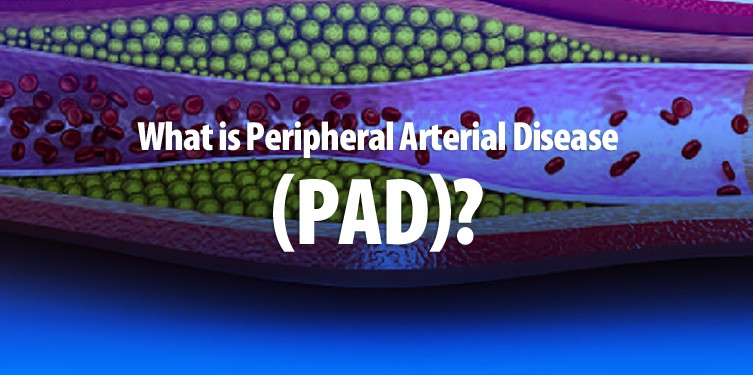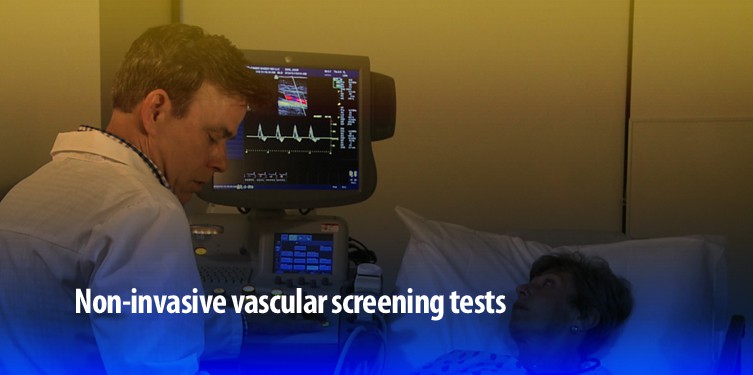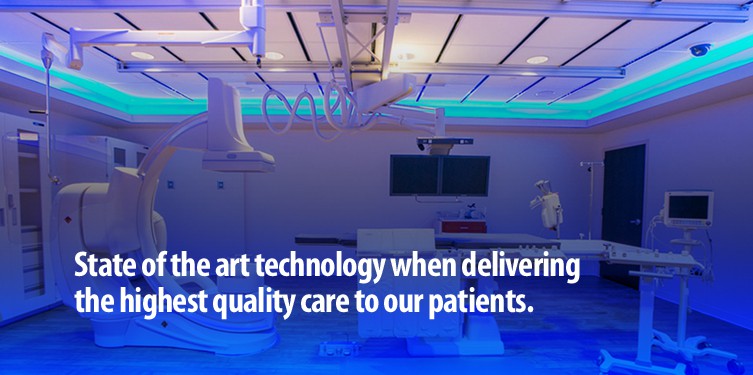Peripheral Arterial Disease, (PAD) is a medical condition caused by plaque buildup in the walls of peripheral arteries which can restrict blood flow to extremities and internal organs. It is estimated that over 18 million Americans have Peripheral Arterial Disease and many of them are unaware that they have PAD.

Healthy peripheral arteries are smooth and unobstructed, allowing blood to flow freely to the legs – providing oxygen, glucose, and other nutrients that your legs need. Typically with age, the peripheral arteries in your body build up plaque – a sticky substance made up mostly of fat and cholesterol. Plaque narrows the passageway within the arteries and causes them to become stiff.
PAD is the end result of the peripheral arteries becoming too narrow or obstructed, thereby limiting the blood flow to the legs.
Causes & Risk Factors of PAD
You are at risk for Peripheral Arterial Disease if any of the following apply to you:
- Age 50 or older
- Gender – Men are more prone to the condition than women
- High blood pressure
- Diabetes
- Smoking (current or former smoker)
- High cholesterol
- Obesity
- Lack of Exercise
- Family history of vascular problems
PAD Symptoms
There may not be symptoms in the early stages of peripheral arterial disease. However, if left undiagnosed and untreated, PAD will increase the blockage of normal blood flow and you may experience some of the following symptoms:
- Pain,aching and/or cramping in the legs
- Difficulty with walking
- Pain while resting your legs or feet
- Non-healing sores on the legs or feet
- Hair loss or discoloration on the legs or feet
Another indication you may have PAD is that your leg pain ceases when activity ends. This is called intermittent claudication. It is important to contact your doctor or request an expert consultation by Maryland Vascular Specialists if you have any of the symptoms of PAD.
Other Health Complications Related to PAD
Peripheral Arterial Disease can cause additional health complications if not diagnosed and treated promptly. When PAD is left untreated, it can lead to Critical Limb Ischemia (CLI), which is the most severe form of PAD and defined by a chronic and severe compromise of blood flow to the affected extremity.
Untreated PAD can lead to a higher risk and occurrence of the following health conditions:
- Pain even while resting
- Ulcers
- Gangrene
- Amputation
- Stroke
- Heart attack
- Aortic Aneurysm
How Do You Diagnose PAD?

The following are simple, non-invasive vascular diagnostic tests that a healthcare provider may order from an accredited vascular lab to diagnose peripheral arterial disease:
- Ankle-brachial index (ABI) is a very simple and noninvasive test used to diagnose PAD. It compares the blood pressure in your ankle with the blood pressure in your arm.
- Doppler Ultrasound imaging is performed as the first step in testing blood flow for patients complaining of leg pain. Doppler ultrasound uses sound waves to evaluate blood as it flows through a blood vessel.
- Duplex Ultrasound is an additional test that your healthcare provider may request if if the Doppler ultrasound results are abnormal. The Duplex uses ultrasound technology to look at the artery and find the blockage causing the decreased blood flow.
- Toe Pressures use an infrared sensor to determine the small vessel vascular condition in relation to the ankle. Toe pressures may be useful in cases of unsuspected vascular disease and are very helpful for evaluating people with calcified vessels, non-healing wounds and/or diabetic feet.
The combination of these tests offer an advanced solution for those experiencing PAD symptoms. Each test either confirms or denies the presence of a blockage and the more tests ran, the more accurately a vascular surgeon can place the location of the blockage in your artery.
Treatment of PAD
Depending on the severity of your condition, treatment options may include:
- Lifestyle changes
- Medications
- Minimally invasive procedures or
- Open vascular surgery
Our fellowship-trained and board-certified vascular surgeons, at Maryland Vascular Specialists, use the most up-to-date techniques to improve our patients’ quality of life.

Our providers are highly effective in implementing endovascular (minimally invasive) procedures to treat artery and vein disorders, which includes PAD.
If you or a your family member are experiencing leg pain, leg cramps or other PAD symptoms or if you have already been diagnosed with PAD and desire to discuss treatment options, then request an expert consultation today!